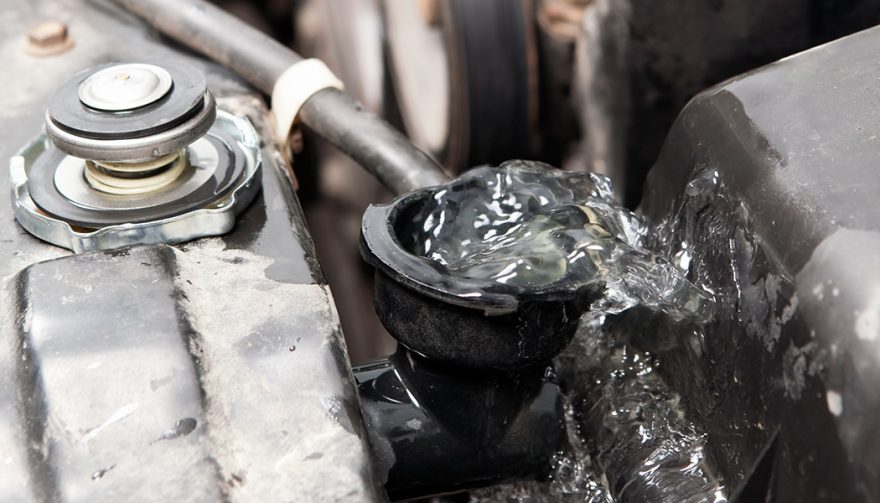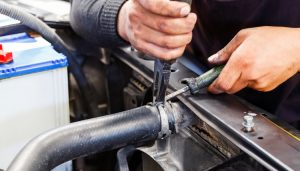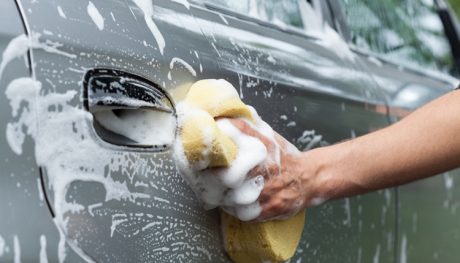
Running water through the system to remove old antifreeze debris. Once flushed the radiator will be filled with new antifreeze and water. This extends cooling system life.
Why It’s So Important to Flush Your Vehicle’s Radiator and How to Do It Yourself
Have you ever needed to know how to flush a radiator? You wouldn’t be alone and preventative maintenance is the best kind. Radiators are usually ignored until a problem develops. The problem that typically draws attention to the hapless radiator is that the engine overheats. By that time, though, simply flushing the radiator won’t fix any problems.
A radiator flush is actually a normal maintenance item. You should do it on a regular basis to prevent expensive problems from developing. To help you out, we’ve made a list of useful information, tips and tricks to help you determine when you should flush your radiator.
Why Flush the Radiator?
- Harmful chemicals and toxins develop in the coolant. These foreign substances result from static electricity in the cooling system causing dissimilar component metals, like aluminum and cast iron, to react with each other. Think of how corrosive battery acid is, and how it causes dissimilar metals inside the battery to react chemically.
- The anti-freeze and anti-boil over properties of coolant deteriorate with time and use. Ignore the coolant long enough, and your engine will be under-protected against damage from freezing and overheating.
- It’s cheaper to prevent mechanical problems than it is to repair them. Coolant is cheap compared to the price of new radiators, engine blocks, cylinder heads, intake manifolds and the like.
How to Flush a Radiator: Drain and Refill or Do a Complete Flush?
A drain and refill is simple enough. Well, on older vehicles it was simple. Just drain the radiator when it is cold, close the drain and then add a 50/50 mix of coolant and distilled water. Run the engine until it’s warm, let it cool, then add coolant and water to the overflow jug as needed. Bring the old coolant to a recycling plant, and then you are done.
Modern vehicles are a little more complicated than that. You must burp air out of the cooling system, otherwise it won’t properly refill to its full capacity. That shortage of coolant in the system will cause rapid engine overheating; not good. Just follow the correct drain and refill procedure in your service manual. You do have one, right?
Either way, if you do a good drain and refill every two or three years, you should be in good shape. Reward yourself with some new tools.
Flush the Entire Cooling System
Okay, so you neglected cooling system maintenance and now the coolant looks awful. We won’t tell anybody. Here’s what to do.
Drain the radiator, saving the old coolant for the recycling plant. Remove the thermostat, then reinstall the thermostat housing. With the thermostat removed, fresh water from your garden hose will have a clear, unobstructed path through the radiator, the engine block and cylinder heads, water pump and all the hoses.
Idle the engine a few minutes, keeping a steady flow of fresh water going into the radiator. You can leave the radiator drain open as well. Keep in mind that old coolant is toxic, so you don’t want it going into storm drains.
You will probably want to flush the overflow jug as well.
Chemical or Water Flush
Yes, you can purchase chemical cleaning compounds to add to your cooling system before the flush. This is a hotly debated subject. If you are uncertain about using chemicals, and you will be after hearing all the different opinions your friends have on the subject, just be content with the fresh water flush.
Don’t Use Air Pressure to Flush Delicate Components
Mechanic shops sometimes have a special tool to ‘power flush’ engine blocks. It is a garden hose adapter that has a compressed air feed attached to it. The theory is that after you get the fresh water gushing through the dirty system, you would give it a blast of compressed air to really stir things up. That was supposed to release old core sand, corrosion and scale. So, what’s the problem with that?
Cooling systems run at less than 20psi in normal conditions. Shop air is 175psi. That extreme pressure can break things, like your car’s expensive heater core. So, skip the air pressure, or take a chance on breaking some expensive parts.
Refill to the Correct Specifications
After a good flush you have an empty radiator, but some fresh water left inside the engine block. How do you refill to a 50/50 mix with the water still in there? Easy.
Look in your shop manual to find the total cooling system capacity in quarts. Add ½ that amount of pure coolant to the system, then continue refilling with distilled water. That will give you the proper 50/50 mix of coolant and water.
A Tip from the Pros
Leave the thermostat out, then start adding your coolant. You will have a much better chance of completely filling the engine block and cylinder heads with the thermostat removed. That reduces the chance of overheating while you burp air pockets out of the system. It also ensures the water pump seals will have lubricant, the coolant, on start up.
Always take a few extra minutes to avoid problems. It makes sense.
Use the Correct Coolant
Each vehicle manufacturer seems to have its own unique coolant. It is best to always buy the proper coolant for your car.
Keep in mind that as coolant flows through your cooling system, it causes a static electrical charge to form. With me so far?
Then consider that coolant slowly becomes acidic with age and use. Several things cause that. So now you have a slightly acidic liquid with a static electrical charge flowing past dissimilar metals, most notably aluminum and cast iron. Now recall that a battery, with its corrosive acid, is constructed of two dissimilar metals surrounded by an acid bath.
If you have worked in a repair shop for any length of time, you’ve seen cars that had their aluminum intake manifold eaten away where it meets the cast iron cylinder heads. That expensive damage was the result of the electrical charge, made worse by the acidic coolant, corroding the aluminum.
Avoiding that problem is just another reason to flush your radiator every so often.





